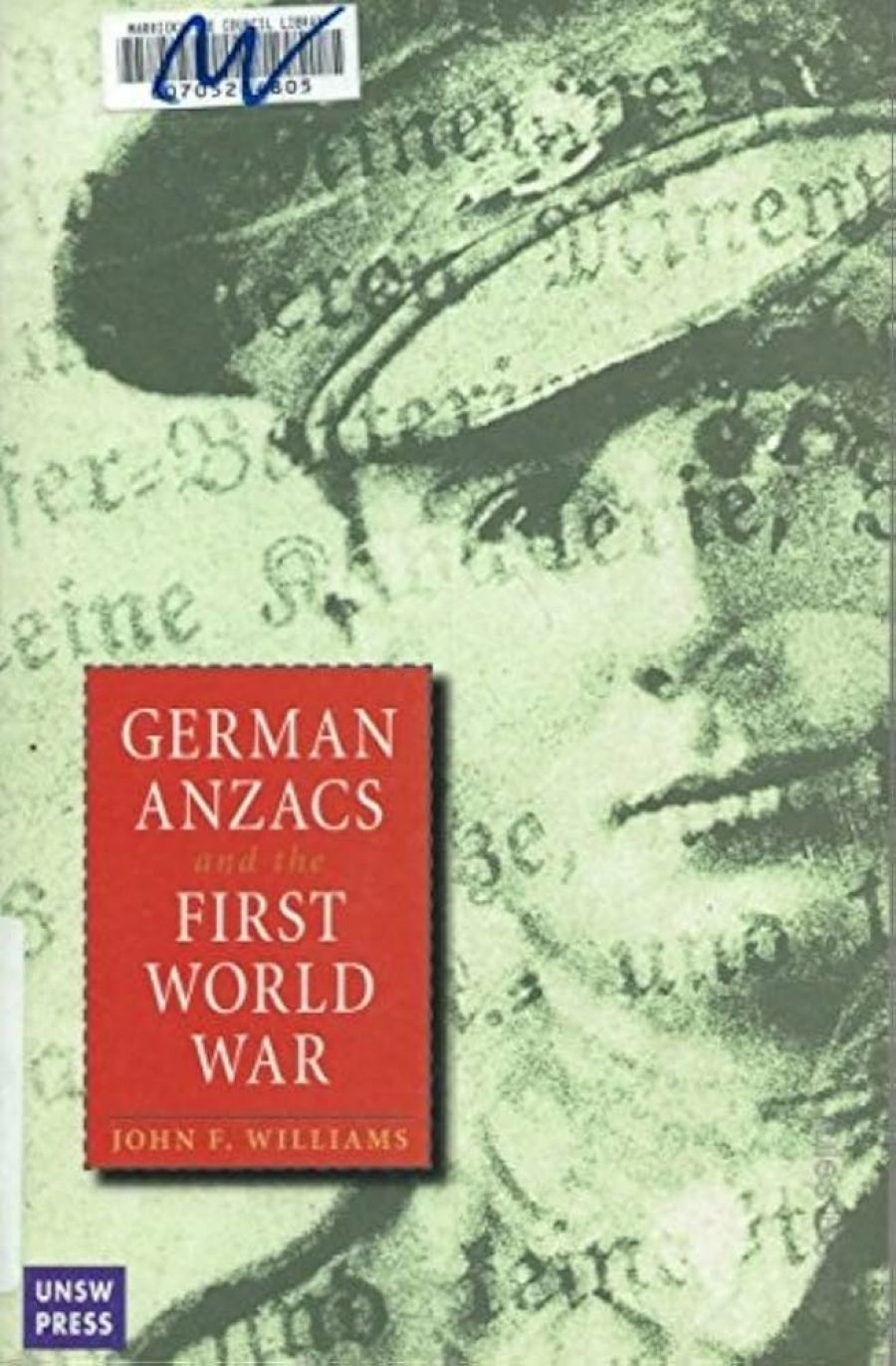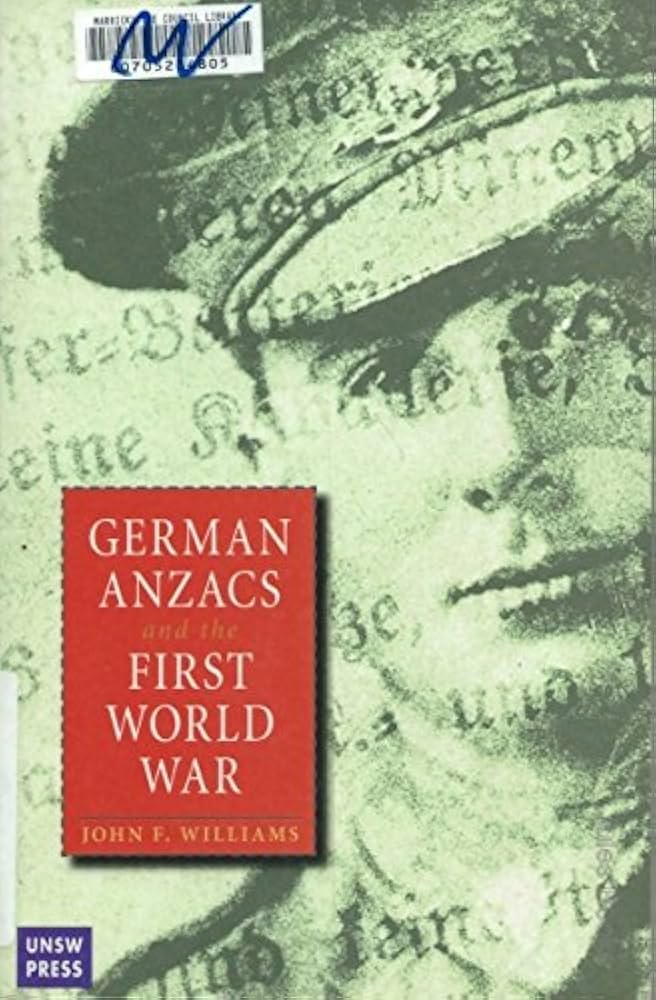
- Free Article: No
- Contents Category: Military History
- Review Article: Yes
- Article Title: Unwanted Anzacs
- Online Only: No
- Custom Highlight Text:
As the mountain of books on the Great War continues to grow, a new genre has emerged, where a small distinct group or subculture is essayed against the backdrop of the larger conflict. Such studies range from academic articles and monographs to popular paperbacks, covering topics such as Australian Rules footballers in the AIF, Victoria Cross laureates, or Aboriginal Australians who served in the ranks.
German Anzacs, as the rather arresting title suggests, concerns those members of the First AIF (Australian Imperial Force) who were of German birth or descent. While the book itself demurs on exact figures, it appears possible that up to 18,000 ‘German Australians’ fought for their country of domicile against their country of cultural antecedence. Specifically, this book traces the experiences of 100 men, via their letters and service records. We are privy to their enlistment, their wartime experiences and, all too often, their deaths.
- Book 1 Title: German Anzacs and the First World War
- Book 1 Biblio: UNSW Press, $39.95 pb, 336 pp
- Book 1 Cover Small (400 x 600):

- Book 1 Cover (800 x 1200):

John Williams is excellently qualified to undertake this study. His previous book, Anzacs: The Media and the Great War, demonstrated a keen engagement with World War I and contributes to the understanding of how contemporary reportage and the media shaped the image of the Australian Anzacs. In addition, Williams is a German speaker, able and willing to consult archives on both sides of the trenches – something all too rare in studies of Australian military history.
With such potential then, it is disappointing that this book is something of a tadpole; there’s a good beginning, but rather an unconvincing follow through. The main point is made well enough – hegemonic Anzac narratives celebrate the Anzac soldier as a ‘bronzed warrior’, the successful combination of British blood and Australian climate; but there is rarely room in such stories for the complex reality, especially for heroes of enemy provenance.
There is far too much rehearsing of familiar military history, and not enough analysis of such material. This is particularly the case when Williams steps back from his subject to give an overview of the progress of the Great War on the Western front. It is not that what he says is wrong or un-founded – his description is admirably clear and thoughtful. But, in the context of this book, such material is simply unnecessary and distracting.
Aside from such criticism, Williams makes many strong points that deserve more attention. It is easy to forget that in 1914 German Australians represented the fourth largest ethno-cultural group in Australia. Many of these spoke German as a first language, and English only with an accent. Yet thousands of young men from such families could distinguish cultural heritage from national patriotism, and volunteered to fight for the King of England rather than the German Kaiser.
Sometimes these men were rejected at the recruiting office because their foreign names aroused suspicion. As the need for reinforcements grew, they would find easier avenues into the forces, or would change their name to avoid the question altogether. The prejudice against men of German background is made clearer as Williams repeats Eric Andrews’s point that there was in fact no ‘rush to enlist’ in August 1914. Only six per cent of eligible men volunteered at the outset, and, as the conscription debates of the following years attest, Australians actually remained sceptical of the war and its relevance to their country. Indeed, contrary to what our politicians like to claim, mobilisation in Australia was relatively modest, and the overall loss of population was equally small when compared to other combatant nations. A quick search of the prime minister’s website demonstrates just how frequently John Howard trumpets Australia’s 100,000 war dead in the twentieth century. While this figure is terrible, next to any European nation it’s a bit like complaining about a broken arm while the bloke next to you has had an amputation.
On the subject of propaganda, Williams looks in detail at the report of the Bryce Commission, which purported to investigate German atrocities against Belgians. The lurid tales of rape and pillage that Lord Bryce detailed helped fan the flames of anti-German sentiment both in Britain and Australia, even if there was often little substantive evidence to corroborate the stories. Williams demolishes many aspects of the Bryce report, though the key point as to whether it constituted intentional misinformation is left unanswered.
Apart from the 100 men whose records formed the basis of the book’s data corpus, Williams’s trump card is General Sir John Monash, the man who ultimately led the five Australian divisions in 1918. Monash was a German Jew, born in Australia to parents who had emigrated from Silesia. He spoke German as a first language, and had coaching to rid his English accent of Teutonic inflexions. As Williams notes, Monash’s German background is rarely mentioned, and the irony of Australia’s greatest commander being racially German is sidestepped. Often he is erroneously described as of ‘Polish origin’. More frequently, he is noted for being a Jew, which serves to displace any other foreign suspicions. It’s a salutary lesson that people could forget that Monash was a German Australian, and as such liable to be interned; but they couldn’t ignore his Jewishness.
There is much interesting material in this book, but it could easily be condensed into a couple of chapters. Equally, Williams might profitably have expanded his study by engaging more with related scholarly studies. The parallel issue of internment is largely ignored throughout the book. Nor is there any detailed follow-up of the lives of Williams’s 100 subjects. How did the war affect them? What happened to the German community in Australia as a result of the war? Analysis of these issues would have made this relevant study more comprehensive.


Comments powered by CComment